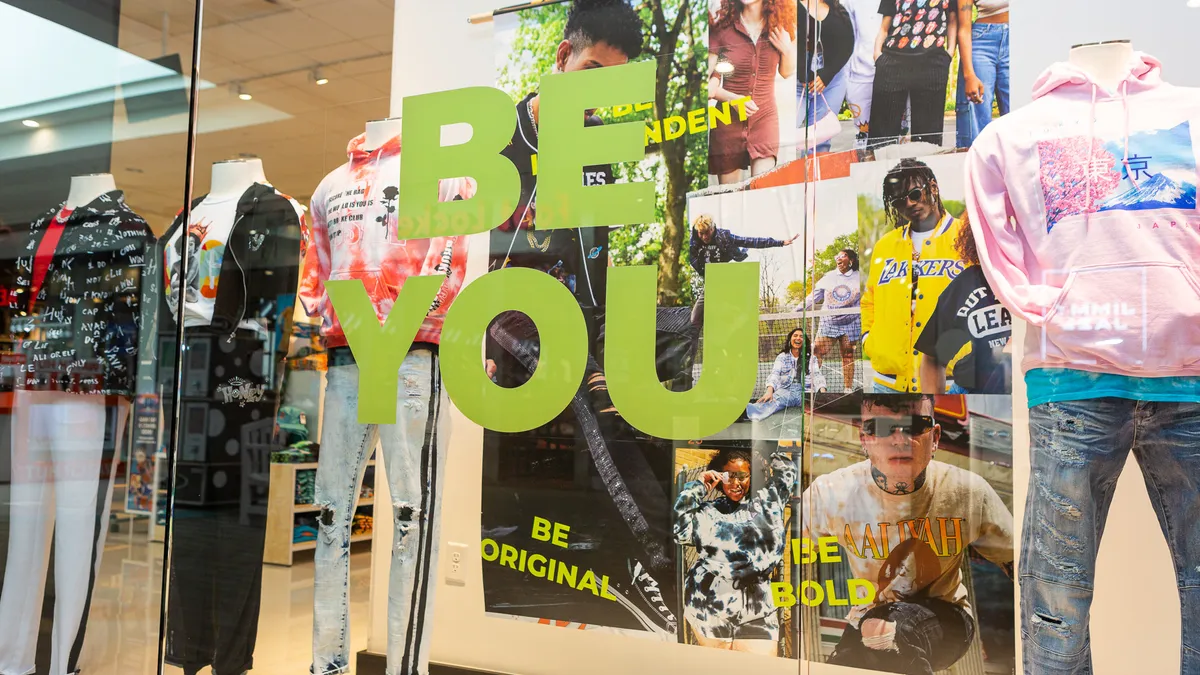Dive Brief:
- Rue21 has hired the advising firm Ducera Partners for help with a possible restructuring after earnings fell this year, according to a report from The Wall Street Journal’s Pro Bankruptcy publication that cited anonymous sources.
- The company is trying to avoid a Chapter 11 filing, according to the report, which also noted that Rue21 is in talks to raise financing. A spokesperson for Rue21 wouldn’t comment on the details of the report but told Retail Dive in an emailed statement, “We routinely work with advisors as we evaluate strategic options.”
- Rue 21 filed for and emerged from bankruptcy in 2017. In late 2020, the teen apparel retailer announced it was expanding its store footprint with its sales trending up.
Dive Insight:
Rue21 was a fast-growing teen retailer in the early 2000s, with a hot brand that could compete against other strong players in the space like H&M and Forever 21.
After a swift expansion, and taking on a large debt load in a private equity buyout, the retailer ran into the mall retail doldrums of the mid-2010s. Rue21 was part of a large cohort of mall-based retailers to go bankrupt in 2017. It emerged that same year, after closing more than 400 stores and turning ownership over to its lenders.
In late 2020, the retailer said it planned to open 15 new stores — after a year when the market saw a high-water mark in retail bankruptcies and store closures with the onset of the COVID-19 pandemic and its early, turbulent months.
Rue21’s chief financial officer said at the time that the retailer was beating its own expectations and increasing its comparable sales year over year. It was also able to retire debt while increasing availability under its asset-based facility.
The retail and apparel markets have gone through several shifts since then. After a year of booming demand and spiraling operational and supply chain costs, consumers have been pulling back on discretionary spending as they hedge against inflation on essential goods. Several apparel retailers have reported falling sales and profits in the new environment.
The shift in demand and sales broadly has exposed or created new financial weaknesses for some in the industry, with the risks in apparel, department stores and specialty retail increasing in recent months, according to data from S&P Global Market Intelligence. The number of companies at risk of bankruptcy, as measured by data from CreditRiskMonitor, has increased significantly from last year.















